2SC458 Silicon NPN Transistor: Datasheet pdf, Equivalent and Pinout
2SC458 datasheet pdf and Unclassified product details from HITACHI LTD stock available at Utmel









The 2SC458 transistor is an NPN BJT transistor with a TO-92 packaging. This article will mainly cover pinout, equivalents, datasheet pdf, features, and other details about the 2SC458 transistor.

2SC458 HITACHI MARZAP300 TRANSISTORES MULTI COMERCIAL PRE PHONO AMILSOM
What is 2SC458?
The 2SC458 transistor is an NPN BJT transistor with a TO-92 packaging. The transistor is designed for use in low-frequency amplifiers, but it can also be utilized in a wide range of other applications. Because the transistor's maximum collector current is 100mA, it can also be utilized to drive a 100mA load with a load voltage of less than 30V. The DC gain ranges from 100 to 500, with a maximum collector dissipation of 200mW. The transistor has a low noise figure of 4 to 10 dB, making it appropriate for a range of low-level audio and other signal amplification applications. Because the transistor's maximum transition frequency is 230MHz, it can be employed in a wide range of RF applications below that frequency.
2SC458 Pinout

2SC458 Pinout
2SC458 Features
Collector-Emitter Volt (Vceo): 30V
Collector-Base Volt (Vcbo): 30V
Collector Current (Ic): 0.1A
hfe: 100-500 @ 2mA
Power Dissipation (Ptot): 200mW
Current-Gain-Bandwidth (ftotal): 230MHz
Type: NPN
Specifications
- TypeParameter
- Surface Mount
having leads that are designed to be soldered on the side of a circuit board that the body of the component is mounted on.
NO - Number of Terminals3
- Operating Temperature (Max.)150°C
- JESD-609 Code
The "JESD-609 Code" in electronic components refers to a standardized marking code that indicates the lead-free solder composition and finish of electronic components for compliance with environmental regulations.
e0 - Terminal Finish
Terminal Finish refers to the surface treatment applied to the terminals or leads of electronic components to enhance their performance and longevity. It can improve solderability, corrosion resistance, and overall reliability of the connection in electronic assemblies. Common finishes include nickel, gold, and tin, each possessing distinct properties suitable for various applications. The choice of terminal finish can significantly impact the durability and effectiveness of electronic devices.
Tin/Lead (Sn/Pb) - Terminal Position
In electronic components, the term "Terminal Position" refers to the physical location of the connection points on the component where external electrical connections can be made. These connection points, known as terminals, are typically used to attach wires, leads, or other components to the main body of the electronic component. The terminal position is important for ensuring proper connectivity and functionality of the component within a circuit. It is often specified in technical datasheets or component specifications to help designers and engineers understand how to properly integrate the component into their circuit designs.
BOTTOM - Terminal Form
Occurring at or forming the end of a series, succession, or the like; closing; concluding.
THROUGH-HOLE - JESD-30 Code
JESD-30 Code refers to a standardized descriptive designation system established by JEDEC for semiconductor-device packages. This system provides a systematic method for generating designators that convey essential information about the package's physical characteristics, such as size and shape, which aids in component identification and selection. By using JESD-30 codes, manufacturers and engineers can ensure consistency and clarity in the specification of semiconductor packages across various applications and industries.
O-PBCY-T3 - Qualification Status
An indicator of formal certification of qualifications.
Not Qualified - Configuration
The parameter "Configuration" in electronic components refers to the specific arrangement or setup of the components within a circuit or system. It encompasses how individual elements are interconnected and their physical layout. Configuration can affect the functionality, performance, and efficiency of the electronic system, and may influence factors such as signal flow, impedance, and power distribution. Understanding the configuration is essential for design, troubleshooting, and optimizing electronic devices.
Single - Polarity/Channel Type
In electronic components, the parameter "Polarity/Channel Type" refers to the characteristic that determines the direction of current flow or the type of signal that can be accommodated by the component. For components like diodes and transistors, polarity indicates the direction in which current can flow through the component, such as forward bias or reverse bias for diodes. For components like MOSFETs or JFETs, the channel type refers to whether the component is an N-channel or P-channel device, which determines the type of charge carriers that carry current through the component. Understanding the polarity or channel type of a component is crucial for proper circuit design and ensuring that the component is connected correctly to achieve the desired functionality.
NPN - JEDEC-95 Code
JEDEC-95 Code is a standardized identification system used by the Joint Electron Device Engineering Council to categorize and describe semiconductor devices. This code provides a unique alphanumeric identifier for various memory components, ensuring consistency in documentation and communication across the electronics industry. The format includes information about the type, capacity, and technology of the device, facilitating easier specification and understanding for manufacturers and engineers.
TO-92 - Transition Frequency
Transition Frequency in electronic components refers to the frequency at which a device can transition from one state to another, typically defining the upper limit of its operating frequency. It is a critical parameter in determining the speed and performance of active components like transistors and integrated circuits. This frequency is influenced by factors such as capacitance, resistance, and the inherent characteristics of the materials used in the component's construction. Understanding transition frequency is essential for optimizing circuit designs and ensuring reliable signal processing in various applications.
230MHz - Power Dissipation-Max (Abs)
Power Dissipation-Max (Abs) refers to the maximum amount of power that an electronic component can dissipate without undergoing thermal damage or degradation. This value is crucial for ensuring reliable operation, as exceeding it can result in overheating and failure. It is typically specified in watts and serves as a critical parameter for designers to determine proper heat management strategies in circuits. Properly managing the power dissipation is essential for the longevity and performance of electronic devices.
0.2W - Collector Current-Max (IC)
The parameter "Collector Current-Max (IC)" in electronic components refers to the maximum amount of current that can safely flow through the collector terminal of a transistor without causing damage to the component. It is an important specification that indicates the upper limit of current that the transistor can handle under normal operating conditions. Exceeding this maximum current rating can lead to overheating and potentially result in the failure of the transistor. Designers must ensure that the collector current does not exceed this specified limit to prevent damage to the component and ensure reliable operation of the circuit.
0.1A - DC Current Gain-Min (hFE)
The parameter "DC Current Gain-Min (hFE)" in electronic components refers to the minimum value of the DC current gain of a bipolar junction transistor (BJT). It is a measure of how much the transistor amplifies the input current to produce the output current. The hFE value indicates the ratio of the output current to the input current when the transistor is operating in the active region. A higher hFE value signifies a higher current gain and better amplification capabilities of the transistor. It is an important parameter to consider when designing and analyzing transistor circuits for various electronic applications.
100 - RoHS Status
RoHS means “Restriction of Certain Hazardous Substances” in the “Hazardous Substances Directive” in electrical and electronic equipment.
Non-RoHS Compliant
2SC458 Applications
Audio Preamplifier Circuits
Audio Amplifier Circuits
Audio Preamplifiers Stages
Driving or Switching Loads under 100mA
Amplification of any low gain signal
RF Circuits
2SC458 Equivalents
2SA1029, 2N3708, 2SC1815, 2SC2458, 2SC2960, 2SC3114, 2SC3198, 2SC3199, 2SC3330, 2SC3331, 2SC3382, 2SC3383, 2SC3916, 2SC3917, 2SC3918, 2SC3919, 2SC3920, 2SC3921, 2SC3922, 2SC3923
Where and How to use 2SC458
The 2SC458 can be utilized in a wide range of applications. When used as a switch, it can drive up to 100mA of current, which can be used to power relays, LEDs, ICs, high-power transistors, and many other components in your circuit. Other than that, it can be used to amplify extremely low gain signals to high gain with noise filtration, for example, it can be used to amplify very low gain audio to high gain, RF signals, and any other sort of low level or low gain signal.
2SC458 Dimensions

2SC458 Dimensions
2SC458 Manufacturer
The Hitachi Group, with about 335,000 workers globally, is a global leader in the Social Innovation Business. Hitachi provides solutions to clients in a wide variety of industries, including Power / Energy, Industry / Distribution / Water, Urban Development, and Finance / Government & Public / Healthcare, via collaborative development.
What type is the 2SC458?
The 2sc458 is a silicon NPN transistor.
What is the complementary of 2SC458?
The PNP Complementary of 2SC458 is 2SA1029
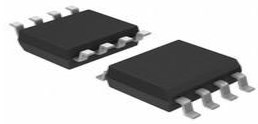 TLC555 Timer: Pinout, Package and Datasheet
TLC555 Timer: Pinout, Package and Datasheet27 July 20213775
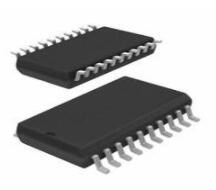 DS3232 RTC: Pinout, Datasheet and DS3232 vs. DS3231
DS3232 RTC: Pinout, Datasheet and DS3232 vs. DS323128 March 20244332
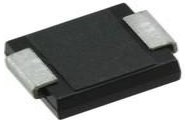 SS34 Diode : Replacement, Price and Datasheet
SS34 Diode : Replacement, Price and Datasheet06 August 202115791
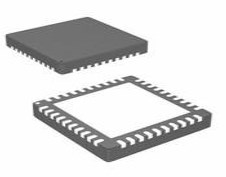 MC34844AEP LED Driver: Pinout, Applications and Datasheet
MC34844AEP LED Driver: Pinout, Applications and Datasheet13 September 2021697
 STP55NF06 Power MOSFET: Pinout, Datasheet, Equivalent
STP55NF06 Power MOSFET: Pinout, Datasheet, Equivalent12 January 20225969
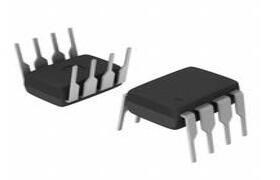 TBA820M Amplifier: Datasheet, Circuit, Alternative
TBA820M Amplifier: Datasheet, Circuit, Alternative28 October 20215329
 Texas Instruments MSP430F2122TRTV: A Technical Overview
Texas Instruments MSP430F2122TRTV: A Technical Overview29 February 202479
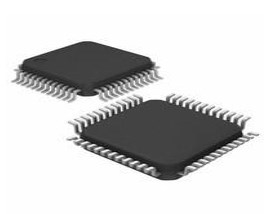 STM32F100C8T6B: 24MHz, 48-LQFP, Pinout and Datasheet
STM32F100C8T6B: 24MHz, 48-LQFP, Pinout and Datasheet28 February 20222586
 What are Weight Sensors?
What are Weight Sensors?31 October 202516347
 What is Universal Serial Bus (USB)?
What is Universal Serial Bus (USB)?28 May 20219393
 A Decade-Long Investment in ON Semiconductor Corp. Yields Over 1200% Returns
A Decade-Long Investment in ON Semiconductor Corp. Yields Over 1200% Returns18 September 20232651
 What is a Chipset?
What is a Chipset?09 July 20213552
 Characteristics and Working Principle of IGBT
Characteristics and Working Principle of IGBT31 October 202518554
 What is Electronic Ballast?
What is Electronic Ballast?28 September 202012834
 Capacitor Basic: How do Capacitors Work?
Capacitor Basic: How do Capacitors Work?18 April 202514706
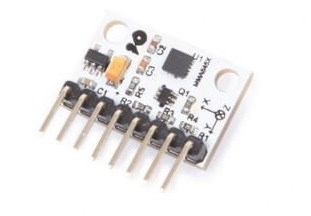 Introduction to Acceleration Sensors
Introduction to Acceleration Sensors07 November 20257392
HITACHI LTD
In Stock: 78600
United States
China
Canada
Japan
Russia
Germany
United Kingdom
Singapore
Italy
Hong Kong(China)
Taiwan(China)
France
Korea
Mexico
Netherlands
Malaysia
Austria
Spain
Switzerland
Poland
Thailand
Vietnam
India
United Arab Emirates
Afghanistan
Åland Islands
Albania
Algeria
American Samoa
Andorra
Angola
Anguilla
Antigua & Barbuda
Argentina
Armenia
Aruba
Australia
Azerbaijan
Bahamas
Bahrain
Bangladesh
Barbados
Belarus
Belgium
Belize
Benin
Bermuda
Bhutan
Bolivia
Bonaire, Sint Eustatius and Saba
Bosnia & Herzegovina
Botswana
Brazil
British Indian Ocean Territory
British Virgin Islands
Brunei
Bulgaria
Burkina Faso
Burundi
Cabo Verde
Cambodia
Cameroon
Cayman Islands
Central African Republic
Chad
Chile
Christmas Island
Cocos (Keeling) Islands
Colombia
Comoros
Congo
Congo (DRC)
Cook Islands
Costa Rica
Côte d’Ivoire
Croatia
Cuba
Curaçao
Cyprus
Czechia
Denmark
Djibouti
Dominica
Dominican Republic
Ecuador
Egypt
El Salvador
Equatorial Guinea
Eritrea
Estonia
Eswatini
Ethiopia
Falkland Islands
Faroe Islands
Fiji
Finland
French Guiana
French Polynesia
Gabon
Gambia
Georgia
Ghana
Gibraltar
Greece
Greenland
Grenada
Guadeloupe
Guam
Guatemala
Guernsey
Guinea
Guinea-Bissau
Guyana
Haiti
Honduras
Hungary
Iceland
Indonesia
Iran
Iraq
Ireland
Isle of Man
Israel
Jamaica
Jersey
Jordan
Kazakhstan
Kenya
Kiribati
Kosovo
Kuwait
Kyrgyzstan
Laos
Latvia
Lebanon
Lesotho
Liberia
Libya
Liechtenstein
Lithuania
Luxembourg
Macao(China)
Madagascar
Malawi
Maldives
Mali
Malta
Marshall Islands
Martinique
Mauritania
Mauritius
Mayotte
Micronesia
Moldova
Monaco
Mongolia
Montenegro
Montserrat
Morocco
Mozambique
Myanmar
Namibia
Nauru
Nepal
New Caledonia
New Zealand
Nicaragua
Niger
Nigeria
Niue
Norfolk Island
North Korea
North Macedonia
Northern Mariana Islands
Norway
Oman
Pakistan
Palau
Palestinian Authority
Panama
Papua New Guinea
Paraguay
Peru
Philippines
Pitcairn Islands
Portugal
Puerto Rico
Qatar
Réunion
Romania
Rwanda
Samoa
San Marino
São Tomé & Príncipe
Saudi Arabia
Senegal
Serbia
Seychelles
Sierra Leone
Sint Maarten
Slovakia
Slovenia
Solomon Islands
Somalia
South Africa
South Sudan
Sri Lanka
St Helena, Ascension, Tristan da Cunha
St. Barthélemy
St. Kitts & Nevis
St. Lucia
St. Martin
St. Pierre & Miquelon
St. Vincent & Grenadines
Sudan
Suriname
Svalbard & Jan Mayen
Sweden
Syria
Tajikistan
Tanzania
Timor-Leste
Togo
Tokelau
Tonga
Trinidad & Tobago
Tunisia
Turkey
Turkmenistan
Turks & Caicos Islands
Tuvalu
U.S. Outlying Islands
U.S. Virgin Islands
Uganda
Ukraine
Uruguay
Uzbekistan
Vanuatu
Vatican City
Venezuela
Wallis & Futuna
Yemen
Zambia
Zimbabwe


